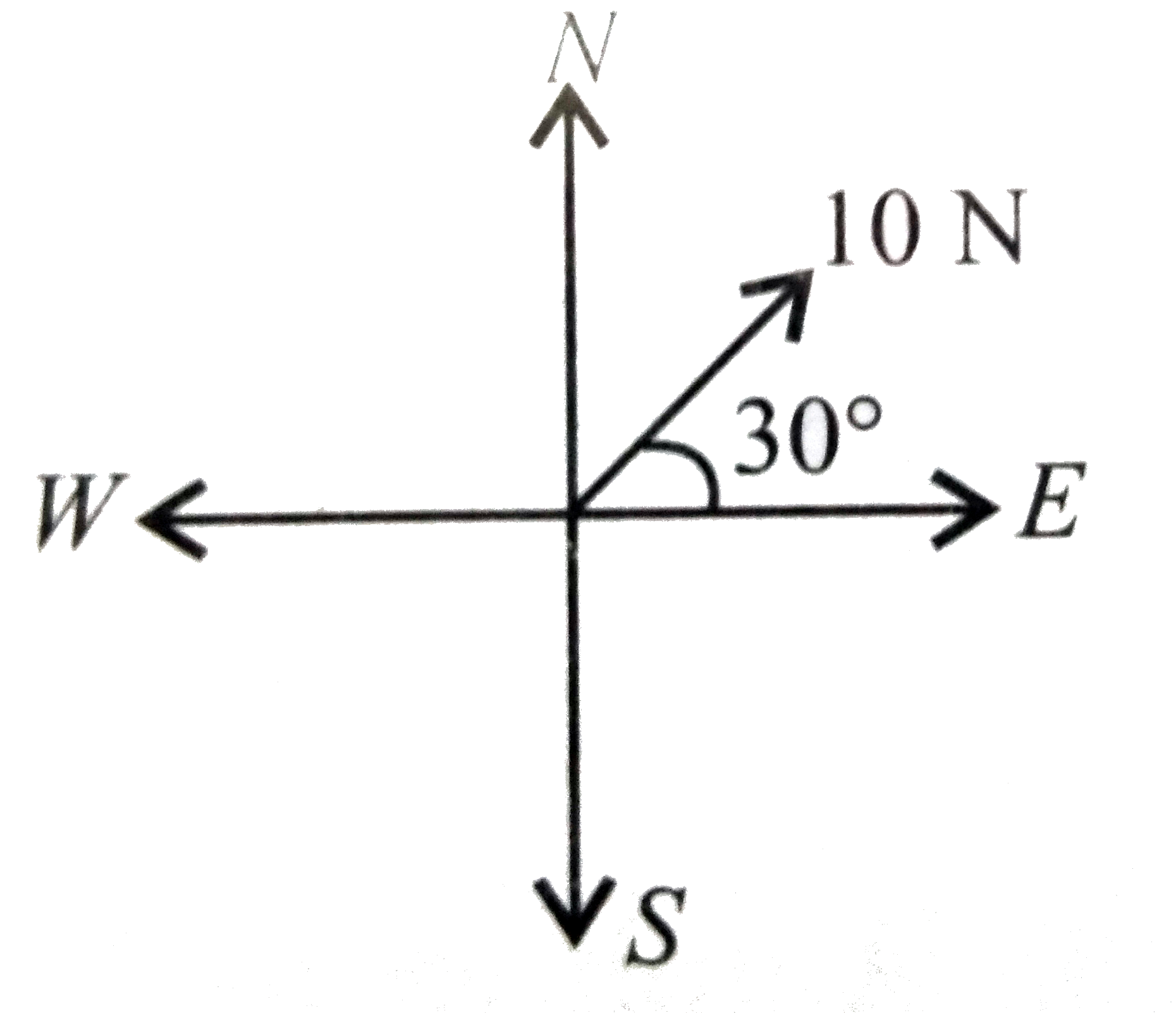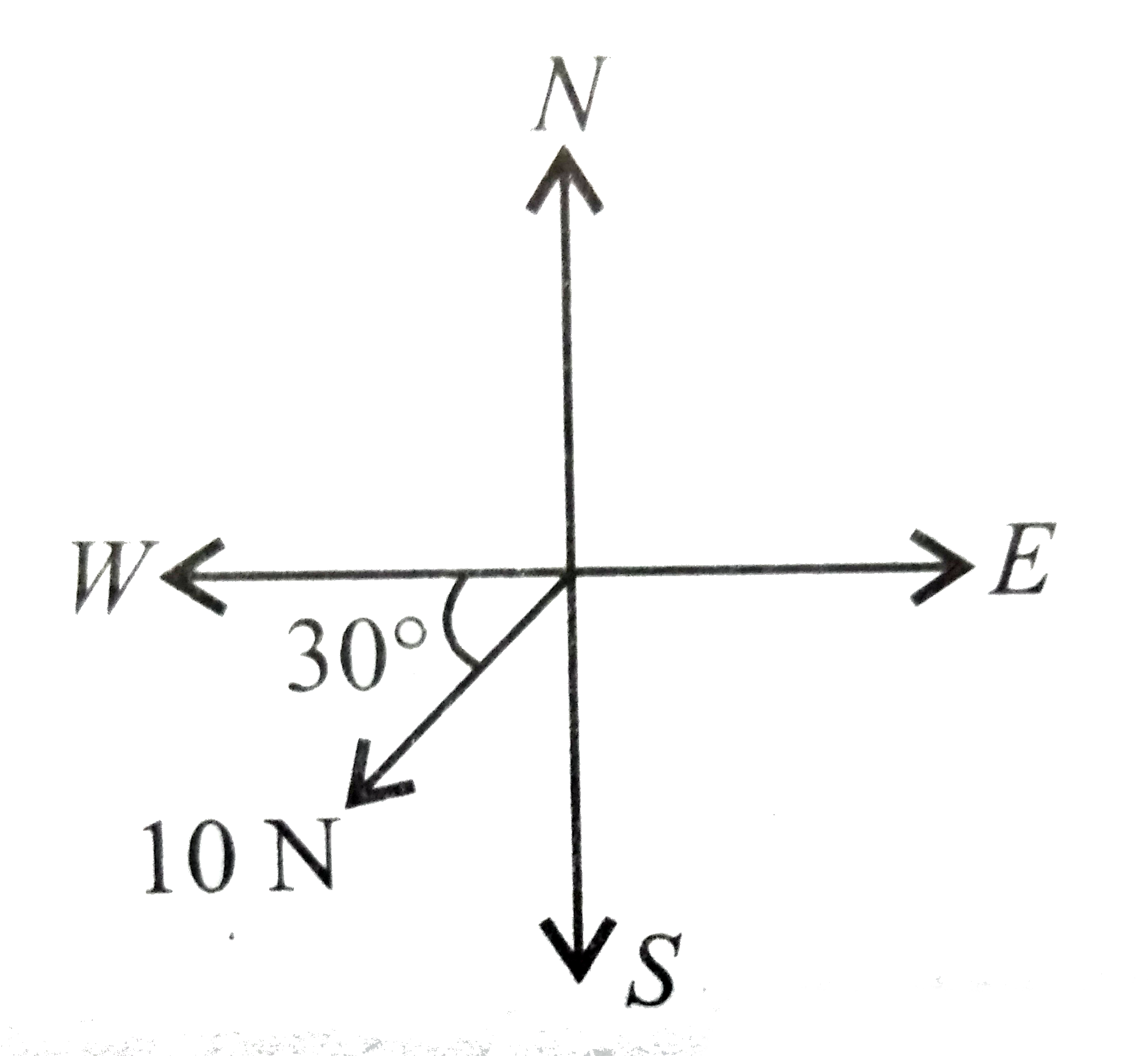State the kind of angle, in each case, formed between the following directions: (i)East and west (ii) East and north (iii)North and north-east (iv) North and south-east
To solve the problem of determining the kind of angles formed between various directions, we will analyze each pair of directions step by step.
1. Draw the Directions:
- First, we need to visualize the cardinal directions: North (N), South (S), East (E), and West (W). Additionally, we can include the intermediate directions: North-East (NE), North-West (NW), South-East (SE), and South-West (SW).
2. (i) Angle between East and West:
- When we look at the positions of East and West, they are directly opposite each other on the compass. The angle formed between them is 180 degrees.
- Conclusion: This angle is a straight angle.
3. (ii) Angle between East and North:
- East is at 0 degrees, and North is at 90 degrees. The angle formed between East and North is 90 degrees.
- Conclusion: This angle is a right angle.
4. (iii) Angle between North and North-East:
- North is at 0 degrees, and North-East is at 45 degrees. The angle formed between North and North-East is 45 degrees.
- Conclusion: This angle is an acute angle (since it is less than 90 degrees).
5. (iv) Angle between North and South-East:
- From North (0 degrees) to East (90 degrees) is a right angle (90 degrees), and from East to South-East (which is at 135 degrees) is an additional 45 degrees. Therefore, the total angle from North to South-East is 90 + 45 = 135 degrees.
- Conclusion: This angle is an obtuse angle (since it is greater than 90 degrees).
Final Answers:
- (i) East and West: Straight angle (180 degrees)
- (ii) East and North: Right angle (90 degrees)
- (iii) North and North-East: Acute angle (45 degrees)
- (iv) North and South-East: Obtuse angle (135 degrees)
- First, we need to visualize the cardinal directions: North (N), South (S), East (E), and West (W). Additionally, we can include the intermediate directions: North-East (NE), North-West (NW), South-East (SE), and South-West (SW).
- When we look at the positions of East and West, they are directly opposite each other on the compass. The angle formed between them is 180 degrees.
- Conclusion: This angle is a straight angle.
- East is at 0 degrees, and North is at 90 degrees. The angle formed between East and North is 90 degrees.
- Conclusion: This angle is a right angle.
- North is at 0 degrees, and North-East is at 45 degrees. The angle formed between North and North-East is 45 degrees.
- Conclusion: This angle is an acute angle (since it is less than 90 degrees).
- From North (0 degrees) to East (90 degrees) is a right angle (90 degrees), and from East to South-East (which is at 135 degrees) is an additional 45 degrees. Therefore, the total angle from North to South-East is 90 + 45 = 135 degrees.
- Conclusion: This angle is an obtuse angle (since it is greater than 90 degrees).
- (i) East and West: Straight angle (180 degrees)
- (ii) East and North: Right angle (90 degrees)
- (iii) North and North-East: Acute angle (45 degrees)
- (iv) North and South-East: Obtuse angle (135 degrees)
Topper's Solved these Questions
Similar Questions
What part of a revolution have you turned through if you stand facing(a) east and turn clockwise to face north?(b) south and turn clockwise to face east?(c) west and turn clockwise to face east?
View SolutionThe streets of a city are arranged like the like the lines of a chess board. There are m streets running from north to south and n streets from east to west. Find the number of ways in which a man can travel from north-west to south-east corner, covering shortest possible distance.
View Solution
Knowledge Check
Which of the following figure represents the force of 10N in a direction of 30∘ east of north?
A B
B C
C D
D
Study the Topographical Sheet Number 45D/10 and answer the following questions :
Eastings : 57 to 63, Northings : 41 to 50
Which is the chief form of irrigation found in the south-western part of the map ?AOverhead tanksBPerennial lined wellsCTube-wellDSpring
A body lost in a jungle finds a note. In the note was written the following things.
Displacements
1. 300 m 53∘ South of East .
2. 400 m 37∘ North of East
3. 500 m North
4. 500√2m North- West
5. 500 m South
He starts walking at constant speed 2m/s following these displacements in the given order.
How far and in which direction is he from the starting ponit after 5 min. and 50 s ?
View SolutionA body lost in a jungle finds a note. In the note was written the following things.
Displacements
1. 300 m 53∘ South of East .
2. 400 m 37∘ North of East
3. 500 m North
4. 500√2m North- West
5. 500 m South
He starts walking at constant speed 2m/s following these displacements in the given order.
How far and in which direction is he from teh starting point after 10 minutes ?
View SolutionA constant current flows in a horizontal wire in the plane of the paper from east to west as shown in figure. The direction of magnetic field at a point will be North to South:

View SolutionA plane moves in windy weather due east while the pilot the plane somewhat south of east. The wind is blowing at 50 km/h directed 30∘ east of north, while the palne moves at 200 km/h relative to the wind . What is the velocity of the plane relative to the ground and what is the direction in which the pilot points the palne ?
View SolutionA man walks 2 km dur north .After that he walks another 2 km along
due east
View SolutionA man covered following displacements. Find the net displacement of the person
(i) 25m west
(ii)20m30∘ east of south
(iii)5√3m south
(iv) 10 m east
(v) 10m60∘ north of west
View Solution